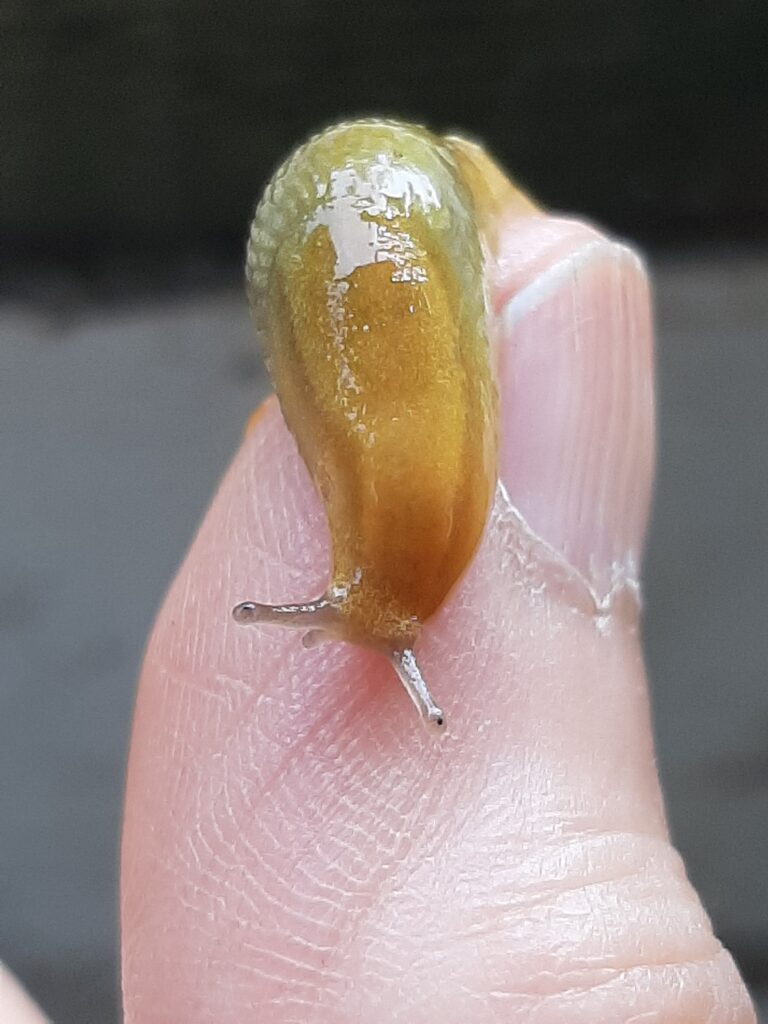Rain, rain, rain. Seems like all it does these days is rain. But some creatures are thriving in all this precipitation. This is absolutely a banner year for slugs.
No one, of course, is fond of slugs. Really, what good are they? They eat holes in lettuce and take bites out of tomatoes, and worst of all, they’re really, really slimy.
But if you take the time to get to know them, slugs have an unexpected friendliness, or maybe it’s just curiosity. If you’re bold enough to ignore the slime and pick one up, it starts checking you out almost right away. Probably feeling the warmth of your hand, the slug begins to inspect you. Little finger-like antennae poke out of the shapeless body. The top pair are light sensors (sort of like eyes), and the lower pair can detect odors. To the delight of kids, the slug can magically retract these antennae into its squishy body, and then promptly stick them back out again, seeming to look you over with their long-stalked eyes.
Slugs are generally referred to as pests. Google “slug” and hundreds of sites pop up with some ferociously poisonous ways of getting rid of them. Seems like no one likes slugs. They’re not crowd-pleasers like, say, fireflies.
But here’s the amazing thing—if it weren’t for slugs, we’d see a lot fewer fireflies. Everyone bemoans the fact that there aren’t as many fireflies around as there used to be. But if you want fireflies in your backyard, then at least a part of that yard has to become firefly habitat.
Lawns are not firefly habitat, especially if they’re mowed as short as a Marine’s crew-cut.
Fireflies need tall grass, so the more corners you leave unmowed, the more fireflies you’ll see. As larvae, fireflies overwinter in leaf litter, so the more leaves you leave unraked and the more garden you leave untidied, the better. And fireflies need something else. They need slugs.
As adults, fireflies have wings and can flit from place to place. Depending on which species of firefly they are (and there are many) they might eat flower nectar or pollen. Some eat small insects, including other fireflies.
But as larvae, fireflies are earthbound and confined to stuff they can find on the ground. And they’re carnivorous—they don’t eat plants. They eat worms and snails and—you guessed it—slugs.
So even if you don’t fall in love with a slug when you look deep into its eyes, remember that the lowly slugs help keep the fireflies sparkling. If you want a summer night filled with fireflies, you have to welcome rainy days and slugs.





Recent Comments